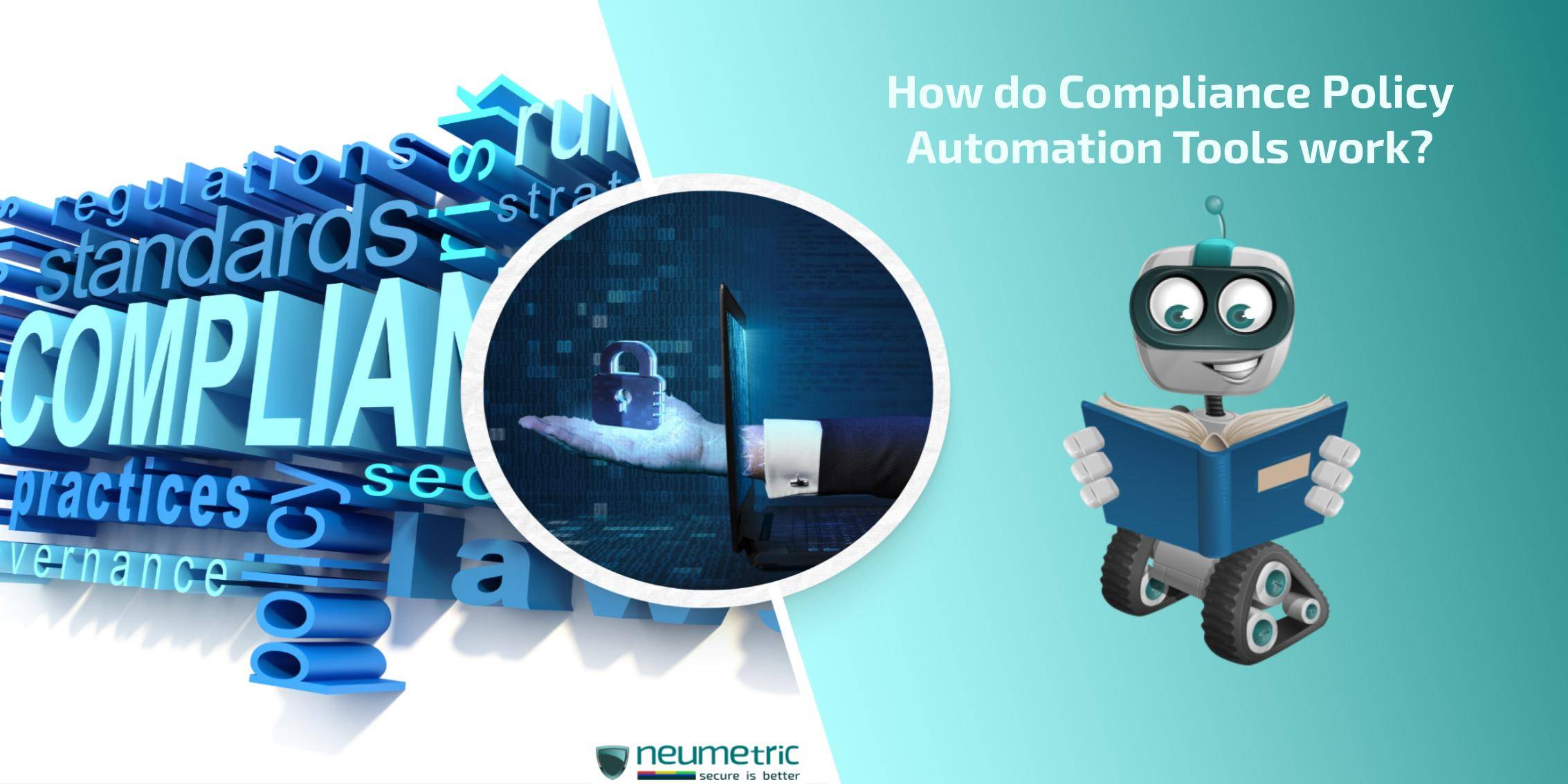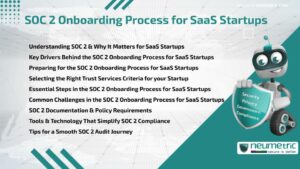Table of Contents
ToggleHow do Compliance Policy Automation Tools work?
Introduction
Compliance Policy Automation Tools quietly ensure that organisations adhere to regulatory requirements without breaking a sweat. These tools are sophisticated software solutions designed to automate the complex task of compliance management, helping businesses navigate the intricate web of regulations effortlessly.
In today’s hyper-regulated business landscape, compliance isn’t just a checkbox exercise; it’s the cornerstone of trust & integrity. From financial institutions to healthcare providers, businesses across all sectors must comply with a myriad of regulations to safeguard their reputation, protect sensitive data & avoid hefty fines.
This Journal is your backstage pass to the world of compliance policy automation. We’ll begin by unravelling the intricacies of compliance policies, explore the evolution of automation tools, dissect their inner workings & discuss the challenges & considerations organisations face. Finally, we’ll peer into the crystal ball to envision the future of compliance management.
Understanding Compliance Policies
Compliance policies serve as the guiding light for organisations, outlining the rules & regulations they must abide by to operate ethically & legally. These policies act as a compass, steering businesses away from regulatory pitfalls & towards smoother sailing.
Think of compliance policies as a recipe for success, comprising ingredients like objectives, responsibilities, procedures & consequences for non-compliance. Without these essential components, navigating the murky waters of regulatory compliance would be like sailing without a compass.
Manually maintaining compliance is akin to trying to juggle flaming torches while riding a unicycle—it’s risky, time-consuming & bound to end in disaster. From tracking regulatory changes to ensuring consistency across departments, manual compliance management is a Herculean task that often falls short.
Evolution of Compliance Policy Automation
Picture a world where compliance management involved mountains of paperwork, endless spreadsheets & sleepless nights. Thankfully, we’ve come a long way since then, with automation stepping in to shoulder the burden & streamline the process.
The rise of compliance policy automation tools marks a turning point in the quest for efficiency & effectiveness. These digital superheroes harness the power of technology to automate data gathering, rule enforcement & reporting, freeing organisations from the shackles of manual compliance.
Automation isn’t just a buzzword—it’s a game-changer for businesses looking to stay ahead of the compliance curve. By automating repetitive tasks, minimising human error & providing real-time insights, automation tools empower organisations to navigate regulatory waters with confidence.
Mechanics Behind Compliance Policy Automation Tools
Compliance policy automation tools are akin to digital detectives, casting a wide net to gather data from diverse sources essential for maintaining regulatory compliance. These sources include internal systems, such as customer databases, financial records & employee databases, where crucial compliance-related information resides. Additionally, these tools tap into external repositories, such as regulatory agency websites, industry publications & legal databases, to stay abreast of the latest regulations, standards & best practices. By aggregating data from these disparate sources, compliance policy automation tools provide organisations with a comprehensive view of their compliance landscape, empowering them to make informed decisions & take proactive measures to ensure compliance.
Seamless integration is the cornerstone of effective compliance policy automation. These tools are designed to seamlessly integrate with an organisation’s existing systems & infrastructure, ensuring smooth data exchange & preserving data integrity across the organisation. Whether it’s an ERP system, CRM platform or GRC software, compliance policy automation tools bridge the gap between siloed systems, enabling organisations to centralise compliance data & streamline compliance processes. Through APIs, connectors & middleware solutions, these tools facilitate bi-directional data flow, enabling real-time access to compliance information & ensuring consistency across systems. By eliminating data silos & facilitating interoperability, integration with existing systems enhances the efficiency, accuracy & effectiveness of compliance management efforts.
Flexibility is the name of the game when it comes to compliance rules within automation tools. Organisations can unleash their creativity by crafting custom compliance rules tailored to their specific regulatory requirements, industry standards & business processes. Whether it’s defining acceptable usage policies for employee data or establishing data retention periods for financial records, compliance policy automation tools empower organisations to codify their compliance requirements into actionable rules. These rules can encompass a wide range of parameters, including data classification, access controls, encryption standards & audit trails, ensuring comprehensive coverage of compliance obligations. By creating tailored rules, organisations can align compliance efforts with business objectives, mitigate risks & demonstrate compliance to regulators, auditors & stakeholders.
One size doesn’t fit all in the world of compliance rules. Compliance policy automation tools recognize the unique nature of each organisation’s business operations, regulatory environment & risk profile, allowing organisations to tailor rules to suit their specific needs. Whether it’s HIPAA compliance for healthcare providers, GDPR compliance for multinational corporations or PCI DSS compliance for payment processors, these tools offer flexibility & customization options to address diverse compliance requirements. Organisations can tweak & refine rules based on factors such as industry vertical, geographical location, organisational structure & risk tolerance, ensuring that compliance efforts are aligned with business objectives & regulatory mandates. By tailoring rules to specific business needs, organisations can enhance the relevance, effectiveness & efficiency of their compliance programs, driving greater confidence & trust among stakeholders.
Key Features & Functionalities
Policy repository management is the backbone of compliance policy automation tools, providing a centralised platform for storing, organising & accessing compliance policies. These tools offer features such as version control, access controls & policy categorization to ensure that the latest versions of policies are readily available to relevant stakeholders. Additionally, policy repository management enables organisations to track policy changes, maintain historical records & demonstrate compliance during audits.
Workflow automation streamlines compliance processes by automating repetitive tasks, standardising workflows & ensuring consistent execution of compliance activities. Compliance policy automation tools allow organisations to create customizable workflows tailored to their specific compliance requirements & business processes. These workflows automate tasks such as policy review & approval, compliance assessments & remediation actions, reducing manual effort & enhancing efficiency.
Audit trail & documentation features provide organisations with a comprehensive record of compliance activities, ensuring transparency, accountability & traceability. Compliance policy automation tools capture detailed audit logs of all compliance-related actions, including policy changes, user activities & audit findings. These audit trails serve as a valuable resource during regulatory audits & investigations, enabling organisations to demonstrate compliance & mitigate risks effectively.
Risk assessment & mitigation functionalities help organisations identify, evaluate & mitigate compliance risks proactively. Compliance policy automation tools offer risk assessment tools that enable organisations to assess the likelihood & impact of compliance violations, prioritise risks based on severity & implement risk mitigation strategies. These tools also facilitate ongoing monitoring of compliance risks, enabling organisations to adapt quickly to changing regulatory requirements & emerging threats.
Challenges & Considerations
One of the primary challenges in implementing compliance policy automation tools is integrating them with legacy systems & existing infrastructure. Legacy systems may lack the necessary APIs or compatibility to seamlessly integrate with modern automation tools, requiring organisations to invest in customization or middleware solutions. Additionally, data migration & synchronisation issues may arise during integration, necessitating careful planning & coordination between IT teams & compliance stakeholders.
Data security & privacy concerns are paramount in compliance management, particularly when implementing automation tools that handle sensitive compliance data. Organisations must ensure that compliance policy automation tools adhere to industry best practices & regulatory requirements for data security & privacy, including encryption, access controls & data masking. Additionally, organisations should conduct regular security assessments & audits of automation tools to identify & mitigate potential security risks.
Regulatory updates & changes present ongoing challenges for organisations seeking to maintain compliance with evolving requirements. Compliance policy automation tools must be adaptable & agile, capable of quickly incorporating changes to regulations & adjusting compliance workflows accordingly. Organisations should establish processes for monitoring regulatory updates, assessing their impact on compliance obligations & implementing necessary changes to automation workflows in a timely manner.
User training & change management are critical factors in the successful adoption of compliance policy automation tools. Organisations must invest in comprehensive training programs to educate users on how to use automation tools effectively, understand their role in compliance processes & adhere to established workflows & procedures. Additionally, organisations should proactively address resistance to change & promote a culture of compliance & continuous improvement to ensure the long-term success of automation initiatives.
Conclusion
Compliance policy automation tools play a crucial role in helping organisations navigate the complexities of regulatory compliance, enhance operational efficiency & mitigate compliance risks. By automating compliance processes such as policy management, workflow automation, audit trail generation & risk assessment, these tools enable organisations to streamline compliance operations, improve regulatory compliance posture & achieve sustainable compliance in an ever-changing regulatory landscape.
In light of the benefits & capabilities offered by compliance policy automation tools, organisations are encouraged to embrace automation as a strategic imperative for sustainable compliance. By investing in automation initiatives, organisations can unlock efficiencies, reduce compliance costs & enhance their ability to adapt to evolving regulatory requirements & emerging risks. Embracing automation is not just a choice—it’s a necessity for organisations looking to thrive in today’s complex & dynamic business environment.
As organisations continue to grapple with the challenges of regulatory compliance, the future landscape of compliance management is poised for transformation. Advances in technology, such as artificial intelligence, machine learning & blockchain, are revolutionising the way organisations approach compliance, enabling greater automation, predictive analytics & real-time monitoring capabilities. By staying abreast of technological innovations & embracing a culture of innovation & agility, organisations can future-proof their compliance strategies & navigate the regulatory landscape with confidence & resilience.
FAQ
What are compliance policy automation tools & why are they important for businesses?
Compliance policy automation tools are sophisticated software solutions designed to streamline & automate compliance management processes within organisations. These tools gather data from various sources, integrate with existing systems & automate tasks such as rule configuration, monitoring, enforcement & reporting. They are crucial for businesses as they help ensure adherence to regulatory requirements, mitigate compliance risks & enhance operational efficiency. By automating compliance processes, organisations can reduce manual effort, improve accuracy & demonstrate compliance to regulators & stakeholders effectively.
How do compliance policy automation tools gather compliance data & how do they integrate with existing systems?
Compliance policy automation tools cast a wide net to gather compliance data from internal systems, such as customer databases & financial records, as well as external sources like regulatory agency websites & industry publications. They integrate seamlessly with existing systems through APIs, connectors & middleware solutions, enabling smooth data exchange & preserving data integrity across the organisation. By aggregating data from disparate sources & centralising it within a unified platform, these tools provide organisations with a holistic view of their compliance landscape, facilitating informed decision-making & proactive compliance management.
What are some key features & functionalities of compliance policy automation tools & how do they contribute to continuous improvement in compliance management?
Compliance policy automation tools offer a range of features & functionalities, including policy repository management, workflow automation, audit trail generation & risk assessment. These tools enable organisations to create, customise & enforce compliance rules tailored to their specific regulatory requirements & business needs. They provide real-time monitoring capabilities to track compliance status, automated enforcement mechanisms to ensure policy adherence & comprehensive reporting & analytics for insights into compliance performance. By leveraging analytics, organisations can identify trends, predict future compliance risks & continuously improve their compliance strategies, driving greater efficiency, effectiveness & resilience in compliance management.





